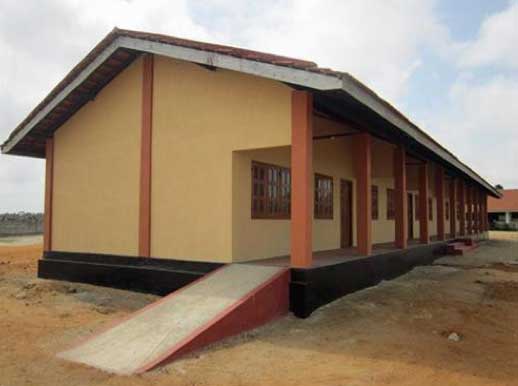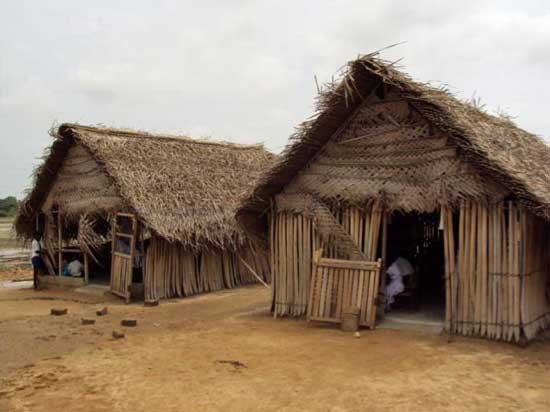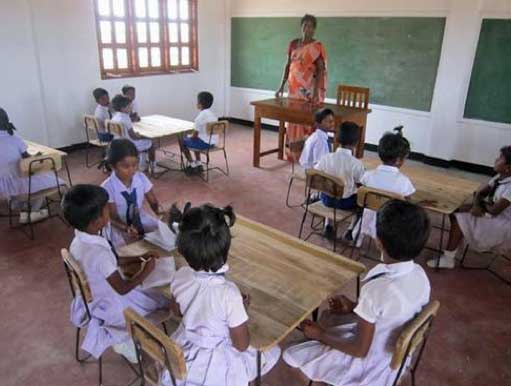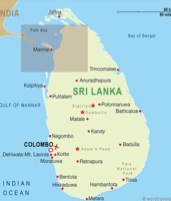Santhepuram School Established July 31, 2011


The New School
Santhepuram Community Profile
The Community: The school is located in the village of Santhepuram, Mannar District. This district, one of five administrative districts in the Northern Province, is located in northwestern Sri Lanka. It covers 2,002 square kilometers, approximately 3% of the total land area of Sri Lanka. Geographically, the bulk of Mannar lies within the arid and dry zone. High temperatures and low rainfall characterize the climate. The monthly temperatures range between 26.5°C and 30.0°C, with highs normally recorded between May and August. Mannar receives nearly 60% of its rainfall during the northeast monsoon, which lasts from October through December. The land area is relatively flat and sits at low elevations. Across the region's gently undulating terrain, rainwater is stored in tanks and used for irrigation of arable land. Crop cultivation (primarily paddy), fisheries, and animal husbandry support most people in Mannar District. Employment opportunities in the district are highly seasonal, and there are no institutional facilities for tertiary education. The district is inhabited by members of various communities, though the Tamil-speaking community is the most prevalent.
The last thirty years of conflict in the region have resulted in the displacement of large segments of the area's population. War has destroyed the region's infrastructure, displacement has scattered former communities, and the jungle has swallowed previously populated areas. The residents of Santhepuram are very poor due to the decades-long war. Displaced on multiple occasions, these villagers have lost their houses, their belongings, and many of their loved ones. There are no concrete structures in the village. The shelters are temporary huts built by either INGOs or the government. The villagers are fishermen by profession. Drinking water is obtained from dug wells, and the village is without an electricity supply. Presently, the government is involved in de-mining the village and rebuilding the infrastructure.
The last thirty years of conflict in the region have resulted in the displacement of large segments of the area's population. War has destroyed the region's infrastructure, displacement has scattered former communities, and the jungle has swallowed previously populated areas. The residents of Santhepuram are very poor due to the decades-long war. Displaced on multiple occasions, these villagers have lost their houses, their belongings, and many of their loved ones. There are no concrete structures in the village. The shelters are temporary huts built by either INGOs or the government. The villagers are fishermen by profession. Drinking water is obtained from dug wells, and the village is without an electricity supply. Presently, the government is involved in de-mining the village and rebuilding the infrastructure.
Santhepuram Need for a School

Temporary shelters formerly used as classrooms.
Currently, classes are conducted in a single permanent building and two temporary huts. The overcrowded, poorly lighted and ventilated huts are not safe. High winds have damaged the thatched roof, causing it to leak in many places. Because the school is structurally unsound, some parents send their children to schools far away, while others do not send their children to school at all.
Under the resettlement program, officials of the Government of Sri Lanka requested Room to Read and Opportunity For All to support the community by providing safe learning spaces for the children there.
Under the resettlement program, officials of the Government of Sri Lanka requested Room to Read and Opportunity For All to support the community by providing safe learning spaces for the children there.

A Former Classroom

A new Classroom
Santhepuram School Project
The new primary school building is approximately 2500 square feet. It is a spacious building with plenty of light and ventilation and is an attractive addition to the community. The exterior of the building is painted to match the existing buildings at the school. The single-story building has five classrooms and built-in storage facilities. There are built-in bookshelves, which the teachers use for displaying various educational materials donated by Room to Read. Room to Read has provided 200 student tables, 200 student chairs, and five sets of tables and chairs for the teachers. Each classroom is 400 square feet, and the corridor will be 500 square feet. The new building has cement block walls, a cement floor, and a clay tile roof mounted on a timber frame.
COMMUNITY/SCHOOL CONTRIBUTION TO THE PROJECT:
- Donation of land by the Department of Education
- Clearing of site and excavation of foundation by villagers
- Unskilled labor for construction work provided by parents
- Roof covering installed by community members
- Toilet pit excavation done by community
- Construction management and maintenance by community
ROOM TO READ CONTRIBUTION TO THE PROJECT:
- Design, estimate and technical support
- Funding for the construction of primary school
- Interior furnishings such as desks, chairs, and chalkboards
- Construction and maintenance training for the community
COMMUNITY/SCHOOL CONTRIBUTION TO THE PROJECT:
- Donation of land by the Department of Education
- Clearing of site and excavation of foundation by villagers
- Unskilled labor for construction work provided by parents
- Roof covering installed by community members
- Toilet pit excavation done by community
- Construction management and maintenance by community
ROOM TO READ CONTRIBUTION TO THE PROJECT:
- Design, estimate and technical support
- Funding for the construction of primary school
- Interior furnishings such as desks, chairs, and chalkboards
- Construction and maintenance training for the community
Because the school only had five classrooms, we had to hold many classes in temporary shelters. These spaces were not suitable for learning, so we requested a new building from the Department of Education. Due to lack of government funds they were unable to help us. They did, however, ask Room to Read on our behalf. Thanks to Room to Read, we now have a complete building with modern facilities. We are very grateful to Room to Read and the donor who helped us fulfill a long-standing need. We hope Room to Read will continue their educational support to this community.
- Miss. L.M. Ganothayam, the school principal and president of the school construction committee
